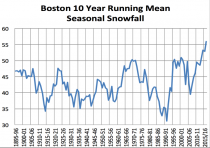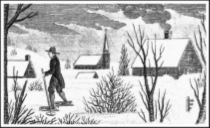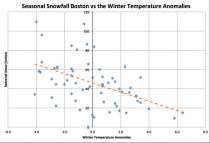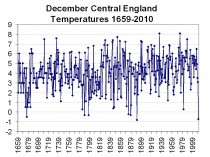By Joseph D’Aleo, CCM, AMS Fellow
See cable hour on hurricanes and snow here.
This is a brief rebuttal to claims made in the CSSR NCA released this year. We are preparing 21 such rebuttals to some bad science. Many organizations that are climate realists are doing this. This is done pro bono. We would appreciate your help as we at Icecap work with some of the nation’s top scientists. Our DONATE button is on the left. Small donations are welcome. We have to cover our maintenance fees for the site before we begin to cover our expenses. BTW we have done another cable show for HCTV reviewing this hurricane season and talking about winters including this one beginning. We will post the link and video when it is ready to go next week. By the way, the BHO posted our winter outlook on their website.
We thank you on this Thanksgiving weekend when we all give thanks for all we have, all the special people in our lives. Each year we recommit ourselves to make us worthy of your appreciation. We have surpassed 96 million page hits.

-----------------
Snowfall and snowcover is diminishing as the earth warms
This is one claim that has been repeated for decades even as nature shows very much the opposite trend with unprecedented snows even to the big coastal cities. Every time they repeat the claim, it seems nature ups the ante more.
They have eventually evolved to crediting warming with producing greater snowfall, because of increased moisture but the events in recent years have usually occurred in colder winters with high snow water equivalent ratios in dry arctic air.
Snowcover in the Northern Hemisphere, North America and Eurasia has been increasing since the 1960s in the fall and winter but declining in the spring and summer. Methodology changes at the turn of this century may be responsible for part of the warm season differences.
----------------------------------
Claims and a reality check
On March 20, 2000, the UK Independent, reported that “Snowfalls are just a thing of the past”. They quoted David Viner of the Climatic Research Unit (CRU) of the University of East Anglia “Global warming was simply making the UK too warm for heavy snowfalls. Within a few years winter snowfall will become a very rare and exciting event”. “Children just aren’t going to know what snow is,” he said.
Similarly, David Parker, at the UK’s Hadley Centre for Climate Prediction and Research, said that eventually British children could have only “virtual” experience of snow via movies and the Internet.
The Union of Concerned Scientists said in 2006 Scientists claim winters becoming warmer and less snowy. They published the results of the study on its climatechoices website: “Across the globe, and here in the Northeast, the climate is changing. Records show that spring is arriving earlier, summers are growing hotter, and winters are becoming warmer and less snowy. These changes are consistent with global warming, an urgent phenomenon driven by heat-trapping emissions from human activities”
The IPCC and US government reports through 2007 had projected snows would become much less common as the climate warms especially in the cities. The UCS had a media workshop in the late summer of 2007 on Mt. Washington promising a dire future for the winter sports and maple sugar industries That next winter all time seasonal snow records were set for snowfall in the northeast from Concord to Caribou (and all through the western US up to Alaska).
The Technical Support Document for the EPA in 2009 (page 29) stated: “Rising temperatures have generally resulted in rain rather than snow in locations and seasons where climatological average (1961-1990) temperatures were close to 0C.”
The latest CSSR NCA had as a key finding:"There has been a trend toward earlier snowmelt and a decrease in snowstorm frequency on the southern margins of climatologically snowy areas (medium confidence). Winter storm tracks have shifted northward since 1950 over the Northern Hemisphere (medium confidence).”
Princeton Environmentalist Michael Oppenheimer and RFK Jr, in 2008 both bemoaned their children in the DC area would never get to enjoy sledding like they did as young in the 1960s.
That very next winter, the DC area and the entire Mid-Atlantic had record snowfall in what was called Smowmaggedon.

Enlarged
Starting in 2008, the UK and much of Europe and the Northern Hemisphere began receiving snow and cold at levels not seen since the days of Charles Dickens in the early 1800s. December 2010 was the second coldest December in the Central England temperature data back to 1659.
In the United States, the winter of 2013/14 was the coldest and snowiest ever in places since the 1800s in the Great Lakes. Along the east coast we have seen record setting snow years and 24 major impact snowstorms for the 10-year period ending 201/17. No other decade had had more the 10.
But the media continues to be oblivious to the real data as the hype machine continues to sell its story despite the failure. The New York Times had an article in February, 2014 titled ‘The end of snow.’ The article documented how snow soon was going to be a distant memory and our kids would never see it except in news reels.
The UCS from the UNH in January 2015 after the winter got off a slow snow start repeated their annual warning about the climate change induced death of the ski and maple sugar industries. But then 2014/15 set records for snowfall in Boston (back to 1872) and many other locations in the northeast into southeastern Canada. In 6 weeks over 100 inches of snow fell in the Boston area with 110.6 inches for the winter. It was also the coldest January to March period and in much of the northeast, February 2015 was the coldest month in history.
The recent snowy winters has the 10 year running mean snowfall in Boston at the highest in the entire record back to the 1880s.

Enlarged
It appears for the eastern areas, the 2014/15 winters snowblitz may have delivered the most snow since perhaps 1717. That year, the snow was so deep that people could only leave their houses from the second floor, implying actual snow depths of as much as 8 feet or more.

Enlarged
The driver for the 2014/15 winter was the same as in the frigid winters of 1916/17, 1917/18, 1976/77 and 1977/78, 1993/94 and 2002/03 - a pool of warm water in the northeast Pacific extending south along the entire west coast.
ALARMISTS CHANGE THEIR TUNE - PROCLAIM WARMING PRODUCES MORE SNOWS
Alarmists claimed increased snow is consistent with global warming because warmer air holds more moisture. In actual fact, only 1 of the 14 years with more than 60 inches of snow in Boston was warmer than normal.

Enlarged
Snow is favored in COLD winters and increases with cooling not warming. In the 39 days in the heart of 2014/15 winter when Boston had 100.2 inches of snow, the melted precipitation was 5.69 inches, a ratio of 17.6 to 1. Typical snow to melted precipitation ration is 10 to 12 to 1. The big snows in recent years have come with unusually cold temperatures. Seasonal snows are high in cold winters, low in warmer winters.
They also claimed that snowcover though is shrinking especially in the spring and summer. They neglect to mention the snowcover is increasing in the fall and winter.

Enlarged

Enlarged
The spring snow extent is diminishing. But some of this may be due to the change in the methodology for snow measurement - from a manual evaluation to an automated albedo (reflectivity) method which in 2000 had NOAA provide a user beware warning not to compare snow cover in the warmer months to values before 2000.







